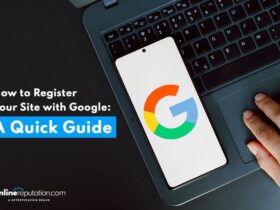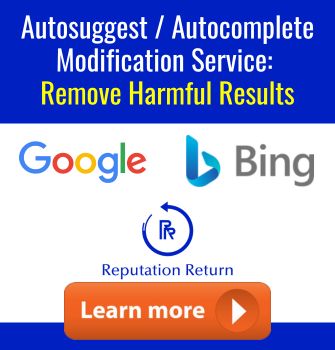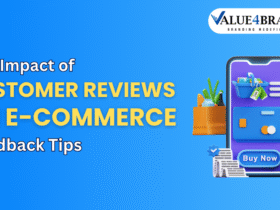In today’s fast-paced digital landscape, understanding how to leverage Google’s People Also Ask (PAA) feature is crucial for enhancing your online visibility and driving more traffic to your website. Reputation Return specializes in helping individuals and businesses optimize their digital presence by influencing and modifying PAA results.
Google’s PAA section appears directly below the featured snippet and is designed to provide users with quick, relevant answers. By strategically crafting content that aligns with these question variations, you can significantly improve your chances of ranking in this highly visible section. Our expertise lies in identifying and addressing the specific needs of your audience while ensuring your brand is represented positively online.
With years of experience in reputation management and SEO, we’ve developed a solution-oriented approach that combines technical expertise with accessible, actionable insights. Whether you’re looking to protect your digital brand or improve your search engine rankings, we’re here to guide you every step of the way.
Key Takeaways
- Optimizing for Google’s People Also Ask can boost your website’s visibility and organic traffic.
- Strategic content tweaks can help you rank in the PAA section and improve click-through rates.
- Reputation Return offers tailored solutions to enhance your digital brand safety and online reputation.
- Understanding user intent and leveraging question variations is key to SEO success in 2023.
- Combining technical SEO expertise with empathetic, audience-focused content ensures better results.
Understanding Google People Also Ask
Google’s People Also Ask (PAA) feature is a dynamic element in search engine results pages (SERPs) that provides users with additional questions and answers related to their search query. This feature aims to help users explore topics more deeply by presenting relevant follow-up questions.
Definition and Purpose of PAA
The PAA box, as it’s often called, appears as a series of expandable question boxes below the featured snippet. Its primary purpose is to assist users in refining their searches and discovering new insights without leaving the search results page.
How PAA Appears in Google SERPs
When a user searches for a topic, Google’s algorithm generates a list of related questions. These questions are displayed in expandable boxes that, when clicked, reveal concise answers extracted from authoritative sources. The PAA feature can significantly enhance content visibility, as it often occupies more screen space than traditional search results.
| Feature | Details |
|---|---|
| PAA Box | Appears as expandable question boxes in SERPs |
| Content Source | Extracts answers from authoritative, high-quality pages |
| Visibility | Occupies more screen space, increasing exposure for featured content |
By understanding and optimizing for PAA, businesses and individuals can improve their online presence and provide users with the information they seek more effectively.
The Importance of PAA in Modern SEO
Understanding the role of Google’s People Also Ask (PAA) feature is essential for modern SEO strategies. This feature not only enhances user experience but also offers businesses a unique opportunity to improve their online visibility.
User Intent and Search Behavior
PAA boxes are designed to address the diverse needs of users by providing quick answers to related questions. By analyzing these questions, businesses can gain insights into what users are truly seeking. For instance, if a user searches for “best reputation management strategies,” PAA might include questions like “How does online reputation management work?” or “What are the top tools for monitoring online reviews?”
Research shows that content appearing in PAA can increase organic traffic by up to 20%. This is because PAA-optimized content often appears across multiple SERPs, expanding its reach. For example, a study found that optimizing for PAA can lead to front-page visibility faster than traditional SEO methods.
To leverage PAA effectively, focus on clear, concise answers and strategic content formatting. Tools like AlsoAsked can help identify hundreds of related questions, guiding your content strategy. By aligning your content with user intent, you can improve discoverability and drive more targeted traffic to your site.
At Reputation Return, we specialize in helping businesses navigate the complexities of PAA optimization. Our expertise ensures your content meets user needs while enhancing your brand’s online presence. For tailored strategies, visit our guide on 10 Questions to Ask Your Reputation Management.
Leveraging PAA Question Variations for Better Rankings
In the ever-evolving landscape of search engine optimization, understanding how to effectively utilize question variations can significantly enhance your online visibility. At Reputation Return, we specialize in optimizing content to align with user intent, helping businesses rank higher in search results.
Integrating Reputation Return for PAA Optimization
Our expertise lies in identifying and addressing the specific needs of your audience. By analyzing search trends and user behavior, we craft content that directly answers the queries people are asking. This strategic approach ensures your brand is represented positively and prominently in search results.
Adapting Your Content Strategy
To capture PAA rankings, focus on creating content that addresses the 5 Ws—who, what, when, where, and why. This framework helps in covering a broad spectrum of user queries. For instance, if a user searches for “best reputation management strategies,” crafting content that answers related questions like “How does online reputation management work?” can improve your chances of ranking in the PAA section.
By integrating our expertise with advanced SEO tools, we ensure your content is not only optimized but also aligned with the latest search trends. This adaptive strategy can lead to improved search result positioning and higher visibility for your brand.
Crafting Concise and Direct Answers for PAA
Creating clear and direct answers is vital for success in Google’s People Also Ask feature. Users typically seek quick, digestible information, and concise responses are more likely to be featured.
Brevity and Clarity in Responses
Studies show that answers featured in PAA are often between 40 to 60 words. This brevity aligns with user expectations for quick, accessible information. To optimize your content:
- Focus on the core of the query, avoiding unnecessary details.
- Use straightforward language that directly addresses the user’s question.
Answering Specific User Queries
Clarity is key to improving content ranking. By addressing specific user needs, you enhance discoverability and engagement. For example, if a user asks, “How does online reputation management work?” a concise answer like:
“Online reputation management involves monitoring and influencing digital content to maintain a positive brand image.”
Striking a balance between comprehensive content and concise sections ensures your material is both informative and easily digestible. This approach not only meets user expectations but also aligns with SEO best practices for improved rankings.
Structuring Content with Clear Q&A Headers
Organizing your content with clear headers is a powerful way to enhance both user experience and SEO performance. At Reputation Return, we emphasize the importance of structured content as part of our expert methodology to help businesses rank higher and achieve better online visibility.
Effective Use of H2 and H3 Tags
Headers play a crucial role in breaking down content into digestible sections. H2 and H3 tags not only improve readability but also help search engines understand the structure and context of your page. By using these tags strategically, you can make your content more accessible and increase your chances of appearing in featured snippet positions.
- Clear headers segment content into logical sections, making it easier for users to find the information they need.
- Organized headers guide search engines in understanding the hierarchy and relevance of your content.
- Top-ranking pages often use H2 and H3 tags effectively to structure their content, enhancing both user experience and SEO performance.
| Best Practice | Details |
|---|---|
| Use H2 for Main Sections | Break down content into primary topics using H2 tags for better organization. |
| Employ H3 for Subtopics | Nest H3 tags under H2 to further divide content into subtopics. |
| Keep Headers Clear | Use concise and descriptive text in headers to improve readability and SEO. |
By structuring your content with clear Q&A headers, you can improve your website’s readability and search engine visibility. This approach not only aligns with Google’s guidelines but also enhances user experience, making it a key component of our expert methodology at Reputation Return.
Incorporating Relevant Long-Tail Keywords
Long-tail keywords are essential for targeting specific user queries and improving your website’s visibility. At Reputation Return, we specialize in analyzing search trends to uncover high-value keywords that drive results.
Identifying Keywords through PAA Analysis
By examining the questions in Google’s People Also Ask section, you can identify long-tail keywords that align with user intent. Tools like SEO Minion and AlsoAsked help extract these insights, revealing opportunities to optimize your content.
| Step | Action |
|---|---|
| 1. Analyze PAA Data | Use tools to identify relevant questions and extract long-tail keywords. |
| 2. Refine Keywords | Select keywords with lower competition and higher relevance to your content. |
| 3. Optimize Content | Incorporate keywords naturally into your content to enhance SEO performance. |

Targeting specific search queries with long-tail keywords can significantly enhance your website’s ranking and visibility. Our expertise ensures your content is optimized for the right keywords, driving targeted traffic and improving your online presence.
Enhancing Content Readability and User Experience
Enhancing content readability is key to improving user experience and SEO performance. In today’s digital environment, users seek information quickly and efficiently. By structuring your content clearly, you can make it more accessible and engaging.
Formatting for Quick, Digestible Answers
Breaking up text with bullet points, headings, and subheaders makes content easier to scan. This approach not only improves readability but also guides search engines in understanding your content’s structure.
- Use bullet points to highlight key points, enhancing scannability.
- Employ clear headers to segment content logically.
Clear formatting leads to increased dwell time and lower bounce rates. For example, using bullet points or lists draws user attention effectively.
Striking a balance between detailed content and concise answers ensures your material is both informative and easily digestible. This approach aligns with SEO best practices, improving your website’s visibility and user engagement.
Utilizing Tools to Scrape and Analyze PAA Data
In the dynamic world of SEO, leveraging the right tools is essential for scraping and analyzing PAA data effectively. These tools not only simplify the process but also provide valuable insights to refine your content strategy.
Overview of SEO Tools like SEO Minion
SEO Minion and AlsoAsked are leading tools that enable multi-level PAA scraping and analysis. SEO Minion excels in extracting meta titles and descriptions, which can significantly impact click-through rates. AlsoAsked, on the other hand, offers a comprehensive view of related questions, helping you identify long-tail keywords and user intent.
- SEO Minion: Ideal for extracting meta data and analyzing page authority.
- AlsoAsked: Provides deep insights into related questions and user intent.
Benefits of PAA Data Scraping
Scraping PAA data allows you to uncover gaps in your content and optimize for featured snippets. By incorporating long-tail keywords from PAA questions, you can enhance your SEO performance. Tools like Pandas help organize this data into structured formats, making analysis more efficient.
Regular updates are crucial, as PAA questions can change frequently. Whether it’s weekly, monthly, or seasonally, staying updated ensures your content remains relevant and competitive. These tools not only boost your digital strategy but also provide a clear competitive advantage in the ever-evolving SEO landscape.
Tracking and Optimizing SERP Visibility
Monitoring your website’s performance in search engine results pages (SERPs) is crucial for maintaining and improving your online visibility. At Reputation Return, we emphasize the importance of using data-driven strategies to optimize your content and enhance your search engine rankings.
Monitoring Performance with Google Search Console
Google Search Console (GSC) is an essential tool for tracking your website’s SERP performance. By regularly reviewing your GSC data, you can monitor key metrics such as impressions, clicks, and average position. This information helps you understand how your content is performing and identify areas for improvement.
Analyzing Traffic and Engagement Metrics
Traffic and engagement metrics provide valuable insights into how users interact with your content. Metrics such as click-through rate (CTR), dwell time, and bounce rate can help you assess the effectiveness of your content in meeting user needs. By analyzing these metrics, you can refine your content strategy to better align with user intent and improve your SERP visibility.
Regular tracking and analysis of your website’s performance data allow you to make informed decisions and continuously optimize your content. This iterative process ensures that your content remains relevant and effective in driving targeted traffic to your site.
For more information on how to protect and enhance your online reputation, visit our guide on reputation management strategies.
Integrating Structured Data for Enhanced PAA Features
Structured data plays a pivotal role in enhancing your content’s visibility in Google’s search features, including People Also Ask (PAA) and featured snippets. By implementing structured data, you provide search engines with a clear understanding of your content, making it more likely to appear in enhanced search results.
Implementing FAQ Schema Markups
FAQ schema markup is a powerful tool for structuring your content in a way that aligns with user search intent. To implement FAQ schema:
- Identify content that naturally lends itself to a question-and-answer format.
- Use JSON-LD to structure your FAQ data, ensuring all required properties are included.
For example, if you’re writing about online reputation management, you might structure your content with questions like “What is online reputation management?” and provide concise answers.
Testing with Google’s Rich Results Test
After implementing structured data, use Google’s Rich Results Test tool to validate your implementation. This tool helps ensure that your markup is correctly interpreted by search engines and identifies any issues that need fixing.
Real-World Benefits
Companies like Rotten Tomatoes and Nestlé have seen significant improvements in click-through rates by using structured data. For instance, Rotten Tomatoes experienced a 25% higher click-through rate for pages with structured data compared to those without it.
Actionable Tips
To get the most out of structured data:
- Regularly audit and update your markup to ensure compliance with Google’s guidelines.
- Focus on providing accurate and complete information in your structured data.
By integrating structured data into your SEO strategy, you can enhance your content’s visibility in search results and improve your chances of appearing in featured snippets.
For more information on how to structure your content effectively, visit our guide on structuring articles for brand visibility.
Conclusion
Optimizing for Google’s People Also Ask feature offers a powerful way to enhance your online visibility and drive targeted traffic. By strategically addressing search queries and incorporating structured content strategies, businesses can significantly improve their digital presence. At Reputation Return, we specialize in safeguarding online reputations through expert strategies that align with user intent and search engine requirements.
Our approach combines technical expertise with empathetic, audience-focused content to ensure your brand stands out. Key techniques include targeting long-tail keywords, structuring data for clarity, and ensuring content is concise and engaging. These methods not only boost SEO performance but also enhance user experience.
Ready to elevate your search engine rankings? Leverage our insights and tools to refine your strategy and achieve better results. For personalized guidance, contact us today for a free, confidential consultation. Let us help you protect and enhance your digital reputation while driving organic growth.
FAQ
What is the best way to monitor my online presence?
Regularly monitoring your online presence is crucial. Use Google Alerts and social media listening tools to track mentions of your name or brand. This helps you stay ahead of any potential issues and address them promptly.
How can I handle negative reviews effectively?
Address negative reviews professionally and promptly. Respond thoughtfully to show your commitment to resolving issues. If necessary, seek professional reputation management services to mitigate damage and restore your online image.
What role does SEO play in reputation management?
SEO is vital for reputation management. By optimizing your content with relevant keywords, you can push positive information higher in search results, helping to overshadow negative content and improve your online credibility.
How can I improve my Google search results?
Focus on creating high-quality, engaging content that answers user queries. Use structured data and FAQ schema to enhance your visibility in search results. Regularly updating your content also signals to search engines that your site is active and relevant.
What tools can help me analyze PAA data?
Tools like AnswerThePublic, SEO Minion, and SEMrush can help you analyze PAA data. These tools provide insights into what people are asking and how you can optimize your content to match their intent.
How can I ensure my content is user-friendly?
Keep your content clear and concise. Use short paragraphs, bullet points, and headings to make it easy to read. Focus on providing direct answers to common questions to improve user experience and engagement.
What is the importance of long-tail keywords in SEO?
Long-tail keywords are more specific and less competitive. They help you target niche audiences and address specific user queries, which can improve your chances of ranking higher in search results.
How can I track my SERP visibility?
Use tools like Google Search Console and Ahrefs to monitor your SERP visibility. These tools provide insights into your rankings, traffic, and engagement, helping you refine your SEO strategy.
What is the benefit of using structured data?
Structured data helps search engines understand your content better. By implementing FAQ schema and other structured data formats, you can enhance your visibility in search results and improve your chances of appearing in featured snippets.
How can I protect my digital brand safety?
Protect your digital brand safety by monitoring your online presence, securing your social media accounts, and using reputation management services. Regular audits and proactive strategies can help safeguard your brand’s image.















